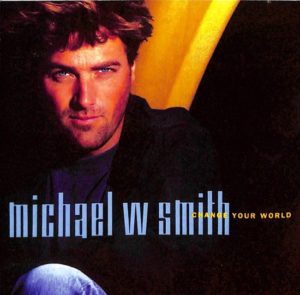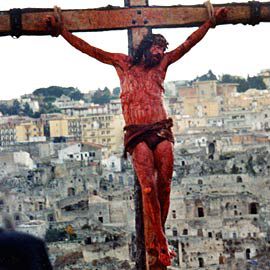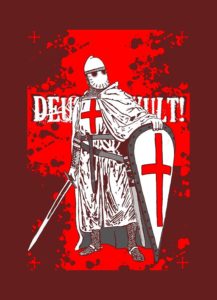Living the Cruciform Life
Have you heard the song “Cross of Gold” by Michael W. Smith from the album Change Your World? I am dating myself to tell you that I remember when this album came out (and I am pretty sure I still have the cd somewhere). In the song, he asks the questions, “What’s your line, tell me why you wear your cross of gold? State of mind, or does it find a way into your soul?”[i] In a time when where it was a fashion statement to wear a large cross on a golden chain, it was a poignant question. The song further comments, “For some it’s simply something to wear around your neck, just a chain, jewelry. It’s a decoration, it’s an icon, a proclamation. An icon of what?”[ii] I have a beautiful cross made of gold and rubies that my grandmother gifted to me many years ago. How often when I wear it, do I reflect on the significance of the cross? Do I wear it as a piece of jewelry or as a symbol of my faith?
https://www.youtube.com/watch?v=hbTple1mkbY
In reading Dominion: How the Christian Revolution Remade the World by Tom Holland, this song came to mind. As I am writing, it is still over a week until Easter and the cross is on my mind. I thought I would stop here, and ponder the impact of the cross. How has this image impacted Western society? Death on a cross was the cruelest form of punishment. As Holland puts it, “No death was more excruciating, more contemptible, than crucifixion. [iii] He further writes, “That a man who had himself been crucified might be hailed as a god could not help but be seen by people everywhere across the Roman world as scandalous, obscene, grotesque.”[iv]
Can you imagine how the Romans would respond to seeing someone wear this symbol as jewelry? I think over the years, we have become callus to this symbol of Christianity. In her book, The Mystery of the Cross: Bringing Ancient Christian Images to Life, Judith Couchman writes about the imagery of the cross.
As I researched and studied further, art and history about the cross both inspired and surprised me. The horror and audacity, simplicity and splendor, reverence and sincerity, captured my imagination… Somewhere in church history we’d misplaced this sacredness and perhaps the earliest Christians guarded what we’ve now lost.[v]
What early Christians revered; we take for granted. What they memorialized; we trivialize. It seems to me that as our view of the cross has changed over the millennia, so has our purpose.
The relationship of Christianity to the world that gave birth to it is, then, paradoxical. The faith is at once the most enduring legacy of classical antiquity, and the index of its utter transformation. Formed of a great confluence of traditions – Persian and Jewish, Greek and Roman – it has long survived the collapse of the empire from which it first emerged, to become, in the words of one Jewish scholar, ‘the most powerful hegemonic cultural systems in the history of the world.’ [vi]
That Christianity has had a profound impact on the world is indisputable, but has this impact been a positive one? Have we faltered from our origins? Nigel Biggar would argue that there is a positive impact of colonialism, but Jean de Dieu challenged me with his commentary on Biggar. “God has brought good out of men’s evil doing in all things. Undoubtedly, some missionaries greatly impacted God’s global glory; however, Colonialism wasn’t necessary to propagate the Gospel.”[vii] I found myself convicted by his blog and impelled to take a look at my own privilege and bias. As I ponder crucifixion and the cross, I wonder at how many people over the course of Western Civilization have seen it as an image of terror. Holland concludes, “Crucifixion was not merely a punishment. It was a means to achieving dominance: a dominance felt as a dread in the guts of the subdued. Terror of power was the index of power.”[viii]
How do we return to the reverent view of the cross, the mystery of the cross? How do we help to repair the harm done by the church in the name of the cross? We do this by living a life of cruciformity. Cruciformity is a term coined by Michael J. Gorman in his book Cruciformity: Paul’s Narrative Spirituality of the Cross. He uses it to represent Paul’s understanding of the cross. “The life of conformity to the cross – cruciformity – that Paul seeks to embody and transmit is as multifaceted as the cross itself.”[ix] The cruciform life is a life focused on the cross of Christ, one that is willing to die daily, as Paul writes in 1 Corinthians 15:31.
Cruciformity “unites love and faith, reinterprets power in terms of love, and makes hope conditioned upon a faithful, cruciform life, even while maintaining that justification is a gift of God’s grace.”[x] It is the foundation for the Christian life. Apart from the cross, the Christian life is devoid of meaning. “God could have chosen any method to save us, but he used the cross. The cross is our spiritual centerpiece, the sign of our soul’s emancipation.”[xi] When we realize and act upon the significance of the cross, we follow the footsteps of Paul in living the cruciform life, and the cross becomes something more than an icon. May the cross never be just an icon to me. May I never take it for granted or trivialize it.
[i] Michael W. Smith, “Cross of Gold,” YouTube video, https://www.youtube.com/watch?v=hbTple1mkbY.
[ii] Ibid.
[iii] Tom Holland, Dominion: How the Christian Revolution Remade the World. (New York: Basic Books, 2019), 2.
[iv] Ibid., 6.
[v] Judith Couchman, The Mystery of the Cross: Bringing Ancient Christian Images to Life. (Downer’s Grove, IL: Basic Books, 2009), 6.
[vi] Holland, 6.
[vii] Jean de Dieu Ndahiriwe, “Nothing praiseworthy is a result of Colonialism!” (2024). DLGP Blogs. https://blogs.georgefox.edu/dlgp/nothing-praiseworthy-is-a-result-of-colonialism/
[viii] Holland, 541.
[ix] Michael J. Gorman, Cruciformity: Paul’s Narrative Spirituality of the Cross (Grand Rapids: William B. Eerdmans Publishing Company, 2001), 92.
[x] Gorman, 399.
[xi] Couchman, 22.
4 responses to “Living the Cruciform Life”
Leave a Reply
You must be logged in to post a comment.



Brilliantly written Becca. And what a fitting time to write this reflection on the cross. I too find it fascinate that an ancient torture/execution device has become a symbol of love. I also think about the concept of self-sacrifice as the highest virtue. That would likely not be the case without the cross of Christ. Can you think of examples from Disney (since you are a fan of Disney) of “love inspired self-sacrifice”?
Thank you David. I love your question! Yes, I can think of many examples. First, “Beauty and the Beast” is my favorite Disney movie. Belle gives up her freedom to save her father. Mulan, Anna, and Moana do the same thing – put their own lives at risk for the sake of loved ones( movies “Mulan,” “Frozen,” and “Moana”). Mufasa dies saving the life of Simba (“The Lion King”). Now I want to go and watch a Disney movie!
Becca,
I love your review of the cross of Christ. I pray that in my own life, it is never simply an icon, either, but its full weight and meaning are always before me.
Thank you Tonette. I, too, pray that I always keep the meaning before me. I have wondered how modern society would react to someone wearing a symbol of an electric chair, or maybe a noose on a tree? These are symbols of death and I think would shock us. We have become calloused to the iconography of the cross if we do not stop and think about the reality of what it represents.